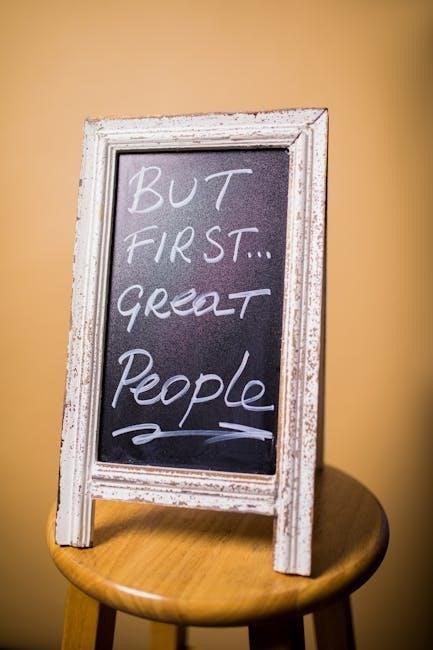Fry Sight Words are high-frequency words essential for building reading fluency. The first , often introduced in kindergarten and first grade, are foundational for early literacy.
1.1 What Are Fry Sight Words?
Fry Sight Words are high-frequency words identified by Dr. Edward Fry to support reading fluency; These words, often non-phonic, are grouped into lists of 100, with the first list covering essential words for early literacy. They are designed to be recognized instantly, aiding students in building foundational reading skills. The Fry Sight Words are divided into ten sets of each, with the first set typically mastered by first grade. These words are crucial as they appear frequently in children’s reading materials, making them vital for developing confidence and fluency in young readers. Regular practice with tools like flashcards or worksheets can help students master these words effectively.
1.2 Importance of Fry Sight Words in Reading Fluency
Fry Sight Words play a crucial role in enhancing reading fluency by enabling immediate recognition of high-frequency words. These non-phonic words, which appear frequently in texts, cannot always be sounded out, making memorization essential. Mastery of Fry Sight Words allows readers to focus on comprehension rather than decoding, fostering smoother and more confident reading. The first alone account for approximately 50% of all words encountered in children’s reading materials, emphasizing their significance. By prioritizing these words, educators and parents can help build a strong foundation for early literacy, ensuring students develop the skills needed to tackle more complex texts with ease and accuracy.

Overview of the Fry First
The Fry First are foundational high-frequency words that support early literacy. These words, divided into manageable groups, are essential for building reading fluency and comprehension skills.
2.1 The First List

The Fry First List comprises high-frequency sight words that are crucial for early literacy development. These words are divided into four groups to facilitate gradual learning. The list includes common words like “the,” “and,” “a,” “to,” and “in,” which are essential for building reading fluency. Each group is designed to be mastered sequentially, starting with the most frequently used words. The structure of the list ensures that students can recognize and read these words instantly, providing a solid foundation for more complex reading tasks. This systematic approach helps students progress smoothly from basic to advanced literacy skills.
2.2 How These Words Support Early Literacy
The Fry First play a pivotal role in early literacy by providing students with a foundation of high-frequency sight words. These words are often non-phonetic and must be memorized, enabling students to recognize them instantly. By mastering these words, students build reading fluency, as they spend less time decoding individual words and more time understanding the text. This instant recognition enhances comprehension and reduces cognitive load, allowing young readers to focus on the meaning of the material. The systematic introduction of these words in groups supports progressive learning, making it easier for students to transition to more complex reading tasks. This approach not only boosts confidence but also lays the groundwork for advanced literacy skills in the future.

Structure of the Fry First PDF
The Fry First PDF is organized into four groups, each containing . It includes flashcards, printable worksheets, and multisensory activities for effective learning.
3.1 Organization of the List
The Fry First are divided into four manageable groups of each. This structured approach allows educators and parents to introduce the words gradually, ensuring steady progress. Each group is designed to build on the previous one, helping learners maintain familiarity and confidence. The list starts with the most common words, such as “the,” “of,” and “and,” which are essential for early reading skills. By organizing the words in this way, the list ensures that learners can master high-frequency vocabulary systematically, making it easier to recognize and use these words in everyday reading.
3.2 Features of the PDF Format
The Fry First PDF is a free, downloadable resource designed to support sight word learning. It is organized into 100 pages, each focusing on a specific word from the list. The PDF features multisensory worksheets, including tracing activities, word matching, and sentence building exercises. These interactive elements help learners engage with the words visually, auditorily, and kinesthetically. The format is user-friendly, with clear fonts and layouts that make it easy for young students to follow. Additionally, the PDF is printable, allowing educators and parents to use it in classrooms or at home. Its structured approach ensures that learners can progress systematically through the list, reinforcing their understanding and retention of the Fry Sight Words.

Benefits of Using Fry First PDF
The Fry First PDF enhances vocabulary, improves sight word recognition, and supports early literacy. It provides multisensory learning opportunities, making it an invaluable tool for young learners.
4.1 Enhancing Vocabulary and Sight Word Recognition
The Fry First PDF is a powerful tool for enhancing vocabulary and sight word recognition. By focusing on high-frequency words, it helps students memorize and instantly recognize these essential terms, which are fundamental to reading fluency. The PDF organizes words into manageable groups, allowing for systematic learning and review. Flashcards, worksheets, and interactive activities within the PDF encourage multisensory engagement, making the learning process both effective and enjoyable. Regular practice with these resources improves reading speed, comprehension, and confidence. As these words are foundational to early literacy, mastering them sets the stage for advanced reading skills and a lifelong love of learning. The structured format ensures consistent progress, making it an invaluable resource for educators and parents alike.
4.2 Multisensory Learning Opportunities
The Fry First PDF offers diverse multisensory learning opportunities, engaging students through visual, auditory, and kinesthetic approaches. Activities like tracing words, matching games, and word-building exercises cater to different learning styles. Flashcards provide visual and tactile practice, while interactive worksheets allow students to write and manipulate words. Audio features enable auditory learning, helping students associate sounds with spellings. These multisensory methods enhance memory retention and make learning sight words dynamic and interactive. By integrating multiple senses, the PDF ensures a comprehensive and enjoyable learning experience, fostering a deeper understanding of the Fry Sight Words and their usage in everyday reading.

How to Use the Fry First PDF
Use the Fry First PDF for flashcard drills, interactive activities, and worksheets to engage students and reinforce sight word recognition. It offers versatile tools for effective practice.
5.1 Flashcard Drills for Memorization
Flashcard drills are an effective method for memorizing Fry’s First . By using printable PDF flashcards, students can practice recognizing each word instantly. Teachers and parents can create physical flashcards or use digital versions for engaging drills. Regular practice helps build confidence and fluency in reading. The repetitive exposure to these high-frequency words ensures they become a natural part of a student’s vocabulary, making reading smoother and more enjoyable. Flashcard drills are a simple yet powerful tool for reinforcing sight word recognition and are often recommended as a starting point for early literacy development.
5.2 Interactive Activities and Worksheets
Interactive activities and worksheets complement flashcard drills by providing hands-on practice with Fry’s First . These resources, available in PDF format, include word searches, crossword puzzles, and matching games. They engage students through multisensory learning, making the process enjoyable and effective. Worksheets often incorporate visuals and manipulatives, helping students connect words with meanings. Teachers can also create custom activities tailored to their classroom needs, ensuring that learning is both fun and productive. By integrating these interactive tools, educators can help students master sight words while fostering a love for reading and learning. These activities are versatile and suitable for various learning styles, enhancing overall literacy skills in a dynamic way.

Grade-Specific Applications
Fry’s First are primarily introduced in kindergarten and first grade, with activities tailored to young learners. They transition smoothly to higher grades, reinforcing fluency and literacy skills.

6.1 Kindergarten and First Grade Focus
In kindergarten and first grade, Fry’s First are introduced to build foundational reading skills. These high-frequency words are taught through multisensory activities, flashcards, and interactive games, helping young learners recognize them instantly. The words are divided into manageable groups, allowing students to progress steadily. By mastering these sight words, children gain confidence and fluency, which are critical for early literacy development. Teachers often use worksheets, drills, and engaging exercises to make learning enjoyable and effective. This focus ensures students establish a strong base for future reading success.
6.2 Transitioning to Higher Grades
As students progress beyond the first grade, the Fry First serve as a foundation for more complex reading skills. These words are integrated into higher-grade materials, reinforcing fluency and comprehension. By mastering the initial list, students can focus on decoding less familiar words, building their reading confidence. The transition involves incorporating these sight words into sentences and short texts, helping learners apply their knowledge in meaningful contexts. This seamless progression ensures that students continue to develop their literacy skills effectively, preparing them for the challenges of upper-grade reading and writing tasks.

Common Challenges and Solutions
Students may struggle with memorizing non-phonetic words, while others lose interest in repetitive drills. Using interactive tools and multisensory methods can address these challenges effectively.
7.1 Overcoming Difficulties in Sight Word Mastery
Mastering sight words can be challenging for young learners, especially non-phonetic words. One effective strategy is using multisensory activities, such as writing words in sand or tracing letters with fingers, to engage multiple senses. Flashcards are also a proven method, allowing for quick repetition and memorization. Additionally, incorporating games like word bingo or matching games makes practice fun and interactive. For reluctant learners, pairing words with images or stories can enhance retention. Consistency is key; daily practice, even for short periods, helps build confidence and fluency. By combining these approaches, educators can help students overcome difficulties and achieve sight word mastery.
7.2 Strategies for Engaging Reluctant Learners
Engaging reluctant learners requires creative and interactive approaches. Gamification, such as turning sight word practice into games like bingo or scavenger hunts, can motivate students. Personalized learning, where activities align with the child’s interests, increases engagement. Collaborative learning, like pairing students to work together, fosters teamwork and fun. Immediate feedback and celebration of small successes build confidence. Incorporating multisensory methods, such as writing words in sand or using colored flashcards, caters to different learning styles; For tech-savvy learners, digital tools and apps offer an appealing way to practice. By making learning enjoyable and relevant, educators can inspire even the most hesitant students to participate and progress in mastering sight words.

Additional Resources and Tools
Supplement your teaching with free Fry Sight Words PDFs, flashcards, and worksheets from Education Outside and Teachers Pay Teachers. These tools enhance learning and engagement.
8.1 Flashcards and Printable Worksheets
Enhance learning with free downloadable flashcards and worksheets tailored for the Fry First . These tools, available in PDF format, offer a multisensory approach to sight word recognition. Flashcards can be used for drills, while worksheets provide interactive exercises for practice. They are designed to support early literacy skills and are ideal for kindergarten and first-grade students. Parents and educators can access these resources from sites like Education Outside and Teachers Pay Teachers, ensuring children gain confidence in reading fluency. The structured activities help reinforce memorization and application of these high-frequency words, making learning engaging and effective.
8.2 Online Platforms for Practice
Online platforms offer interactive and accessible ways to practice Fry Sight Words. Websites like Education Outside provide downloadable PDFs and digital tools for engaging practice. These platforms often feature interactive games, quizzes, and virtual flashcards, making learning dynamic and fun. They cater to various learning styles, allowing students to practice at their own pace. Many platforms are free or low-cost, making them accessible to all. Regular practice on these sites helps reinforce sight word recognition and builds reading confidence. Educators and parents can track progress and identify areas needing extra focus. Utilizing online resources complements traditional methods, offering a modern approach to mastering Fry Sight Words effectively.
The Fry First PDF is a valuable resource, enhancing reading fluency and confidence in early learners, fostering a lifelong love for reading through consistent practice.
9.1 The Impact of Fry Words on Long-Term Literacy
The Fry Sight Words play a pivotal role in establishing a strong foundation for long-term literacy. By mastering these high-frequency words, students develop reading fluency and comprehension skills that are crucial for academic success. These words, particularly the first 100, are encountered frequently in texts, making instant recognition essential for building confidence and reducing decoding challenges. As students progress, their ability to recognize Fry Words effortlessly enables them to focus on more complex vocabulary and deeper understanding of content. This proficiency not only enhances their reading abilities but also supports their overall academic performance, laying the groundwork for a lifelong appreciation of reading and learning.
9.2 Encouraging Lifelong Reading Habits
The Fry First PDF is a valuable tool for fostering a love of reading that extends beyond the classroom. By providing engaging and interactive resources, such as flashcards and worksheets, educators and parents can make learning sight words a enjoyable experience. This positive association with reading helps children develop a strong foundation for lifelong literacy. The multisensory approach of the PDF, combining visual and kinesthetic learning, keeps young learners engaged and motivated. As students master these foundational words, they gain confidence, which encourages them to explore more complex texts and fosters a curiosity about the world of reading. By making learning fun and accessible, the Fry First PDF helps cultivate a lasting appreciation for reading in children.
